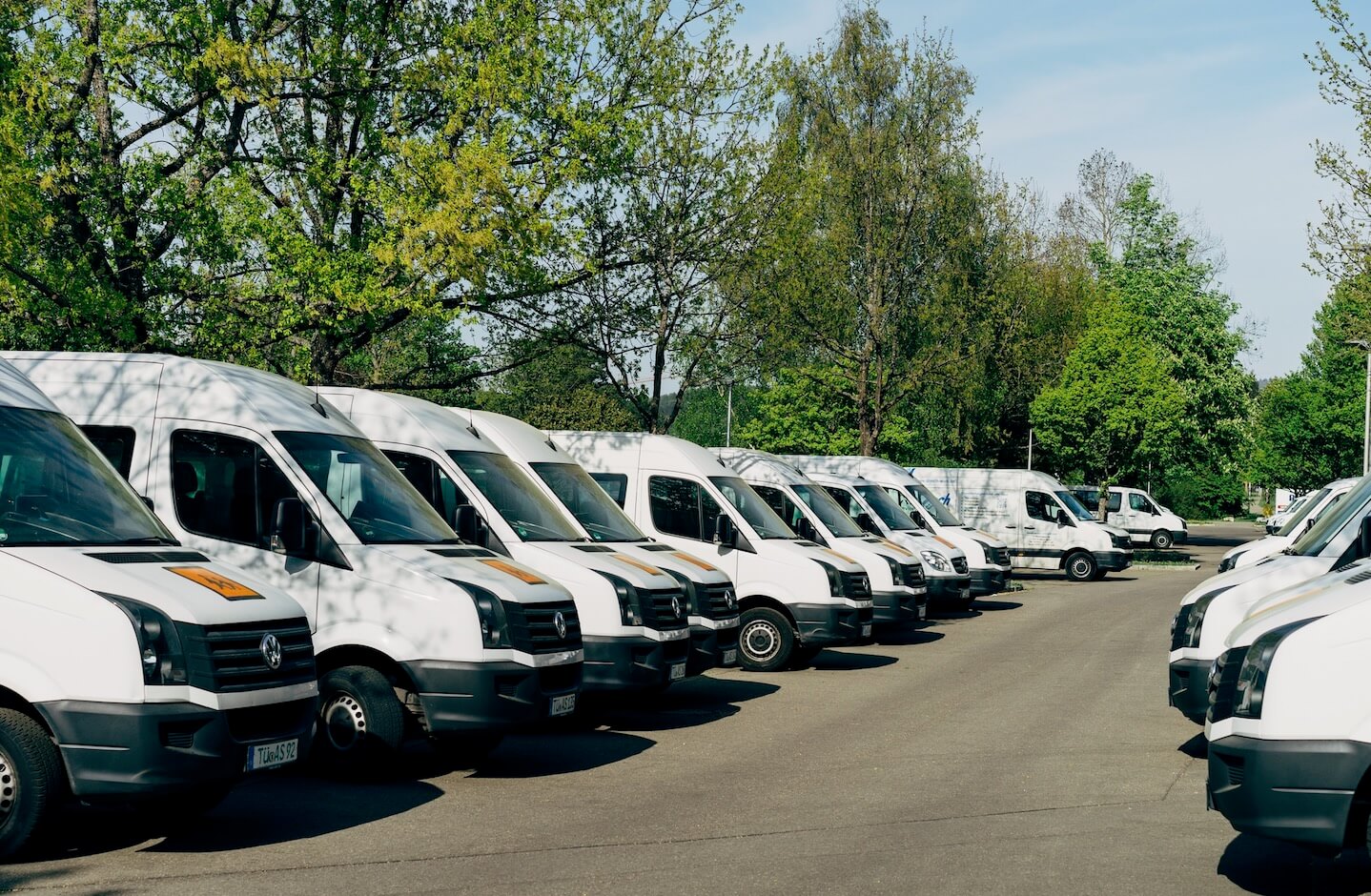As a new fleet owner, you’re likely faced with numerous responsibilities, among which includes the need to modify, or “upfit” your commercial vehicles to meet your business requirements. Upfitting involves the process of customizing these vehicles with various equipment, technology, and other add-ons to enhance their functionality and efficiency. This guide provides insights into the key considerations in commercial vehicle upfitting for new fleet owners, focusing on areas such as base vehicle selection, different upfitting options, branding, and an evaluation of the return on investment (ROI) in upfitting.
Selecting the Right Base Vehicle: Factors to Consider
Choosing the right base vehicle is the foundation of successful upfitting. You’ll want to consider the vehicle’s size, capacity, and payload. The size of the vehicle should align with its intended use; compact vehicles might be ideal for quick city deliveries, while larger ones may be required for transporting heavy equipment. Likewise, the capacity and payload should be sufficient to carry the weight of both the upfitting components and the cargo that it will typically transport.
Fuel efficiency is another key aspect to consider when choosing a base vehicle. More fuel-efficient vehicles can significantly reduce your operating costs over the long term. In this context, you may want to look into hybrid or electric vehicles (EVs) which are increasingly becoming viable options for commercial use.
Think about the vehicle’s drivability and maneuverability, especially if your operations involve tight city streets or off-road conditions. This will not only affect the efficiency of your operations but also the safety of your drivers.
Consider the life cycle costs, including purchase price, maintenance, repair, and potential resale value. While some vehicles may be cheaper to buy, their maintenance costs or lower resale values may make them more expensive in the long run.
Don’t overlook compatibility with the upfits you intend to install. Certain vehicles might not be compatible with some upfits or may require costly modifications to accommodate them. Therefore, understanding what upfits are crucial for your operations and ensuring your base vehicle can efficiently accommodate them is fundamental.
5 Of The Ways You Can Have Your Commercial Vehicles Upfitted
With a myriad of options available when it comes to upfitting your commercial trucks, it can be challenging to determine what’s best for your fleet. Your decision should be primarily guided by your business needs, focusing on improving functionality, efficiency, and safety. Let’s dive into a few ways you can upfit your commercial vehicles, starting with storage solutions.
Customizing Storage Solutions: Upfitting for Organized Equipment Management
Well-organized and efficient storage solutions can make a huge difference in productivity. For instance, consider installing shelving units, drawers, and bins that are specifically designed to hold your tools and equipment. This not only prevents items from moving around while in transit but also makes it easier for your workers to find what they need quickly.
Customizable storage options can be designed to fit your unique needs. Whether it’s vertical shelving for long items like pipes or secured drawers for valuable equipment, upfitting providers can work with you to design a storage solution that maximizes your vehicle’s space and enhances your workflow.
Enhancing Productivity: Optimizing Workflows with Upfitting
Upfitting can transform your commercial vehicles into mobile workstations, enabling your team to work efficiently on the go. Mobile office solutions, for instance, can be integrated into your vehicles, providing workers with desks, chairs, and lighting for paperwork or computer-based tasks.
You can also add power sources such as inverters or additional battery systems, ensuring that your workers’ tools and devices are always charged and ready to use. This can significantly reduce downtime due to low battery power or the lack of access to electrical outlets.
Consider implementing upfits that support the physical health of your employees. Ergonomic improvements such as adjustable seats, step bumpers, and easy-to-reach storage can reduce strain and the potential for work-related injuries, thereby increasing productivity.
Custom Solutions: Custom Fabrications for Unique Applications
Every business has unique needs, and sometimes, standard upfits may not fully meet them. In such cases, custom fabrications can provide the solution. Whether you need a specialized ladder rack design, a custom-built refrigeration unit, or a uniquely shaped storage compartment, upfitting providers can create bespoke solutions that fit your specific requirements.
Custom solutions can extend beyond storage and workflow enhancements. For example, you might need customized security systems for high-value cargo or specially designed lifts and cranes for heavy lifting. In these situations, working with an upfitting provider experienced in custom fabrications can be highly beneficial.
Technology Integration: Upfitting for Connectivity and Communication
In today’s digital world, upfitting is more than just physical modifications. Technology integration plays a critical role in enhancing connectivity and communication. GPS tracking systems, for instance, can be installed to monitor your vehicles in real-time, optimizing routing and improving response times.
In-cab technology such as tablets or rugged laptops can give your drivers access to work orders, customer information, and more on the go, increasing efficiency and reducing the risk of errors. Additionally, telematics systems can gather and analyze data about your fleet’s performance, fuel consumption, and driver behavior, enabling you to make informed decisions about your operations.
Connectivity solutions can also improve safety. Backup cameras, sensors, and advanced driver-assistance systems (ADAS) can help prevent accidents and reduce the risk of damage to your vehicles.
Ensuring Compliance: Meeting Regulatory and Safety Standards
Compliance with regulatory and safety standards is not just a legal requirement but also a way to protect your business and employees. Upfitting can play a pivotal role in this area. For example, adding safety features like fire extinguishers, first aid kits, and hazard signs can help meet Occupational Safety and Health Administration (OSHA) requirements.
Specialized upfits can ensure compliance in specific industries. For instance, refrigeration units can be installed to maintain certain temperatures for perishable goods, meeting food safety regulations. Additionally, certain upfits can help you adhere to environmental regulations, such as spill containment units for hazardous materials.
It’s also worth noting that ensuring your vehicles meet Department of Transportation (DOT) requirements is crucial. This might involve installing specific types of lighting, signage, or other equipment as per the DOT regulations.
Vehicle Wrapping and Branding: Making a Statement with Fleet Graphics
While the functional benefits of upfitting are clear, let’s not overlook the branding opportunities it presents. Vehicle wrapping and graphics can turn your fleet into mobile billboards, promoting your brand wherever they go. This kind of exposure can significantly enhance your brand’s visibility and recognition, potentially leading to increased business opportunities.
According to Basin Upfitting, one of the commercial van upfitters available in UT, “While your truck is being upfitted we can also customize a wrap design to turn your daily driving into a rolling advertisement.”
Vehicle wraps can range from simple logos and contact information to full-coverage designs that cover the entire vehicle. With advancements in printing technology, the options for designs, colors, and finishes are virtually limitless, enabling you to create a look that truly represents your brand.
Vehicle wraps are not just about aesthetics. They can also provide valuable information to potential customers, such as your services, special promotions, or unique selling propositions. This way, they can act as an additional marketing channel, complementing your other advertising efforts.
Aside from marketing benefits, vehicle wraps can provide some practical advantages as well. They can protect your vehicle’s paintwork from scratches and minor damage, helping to preserve its appearance and potentially enhancing its resale value.
Keep in mind that consistency is key in branding. Ensuring all your vehicles have a consistent design helps reinforce your brand identity and makes your fleet immediately recognizable, which can be particularly beneficial in crowded marketplaces.
Evaluating the ROI of Upfitting: Calculating the Benefits
Investing in commercial vehicle upfitting may seem like a considerable expense, but understanding its ROI can shed light on its long-term benefits. One immediate benefit is improved efficiency. Upfitted vehicles often allow for quicker, more organized operations, which can lead to increased productivity and potential revenue.
Maintenance costs can also be reduced with the right upfitting. For example, proper storage solutions can prevent damage to tools and equipment, reducing the need for replacements. Similarly, upfits designed to protect the vehicle itself, such as floor liners or seat covers, can extend the vehicle’s life and reduce repair costs.
Safety enhancements can lead to fewer accidents, resulting in lower insurance premiums, not to mention the invaluable benefit of protecting your employees. Also, as previously mentioned, branding upfits can bring in new business, making it another avenue for potential returns.
Consider the potential impact on employee morale and retention. Well-equipped, comfortable vehicles can make your employees’ jobs easier and more enjoyable, potentially leading to higher job satisfaction and lower turnover.
Don’t forget to factor in potential tax benefits. Many jurisdictions offer tax deductions or credits for certain upfits, which can further improve the ROI.
Entering the realm of commercial fleet ownership comes with its challenges, but equipping your vehicles with the right upfits can significantly enhance their functionality, efficiency, and value. From selecting the right base vehicle to integrating advanced technology and complying with regulatory standards, careful planning and a strategic approach are essential.
Remember, upfitting is more than just an investment in your vehicles—it’s an investment in your business’s efficiency, safety, and reputation. With the right upfitting strategy, your commercial fleet can drive your business towards success. Whether you’re making deliveries, performing services, or transporting goods, an upfitted vehicle is a powerful business tool that can help you achieve your goals and set your business apart from the competition.
The post A Commercial Vehicle Upfitting Guide for New Fleet Owners appeared first on Enterprise Podcast Network – EPN.





Leave a Reply